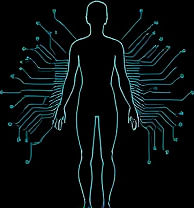Hormone Optimization Tests and Their Role in Personal Health
 by Verner Mayer
by Verner Mayer
Hormone optimization tests offer a way to monitor and balance key hormones, leading to improved energy, mood, and overall well-being. These tests integrate with biohacking practices, helping tech-savvy individuals fine-tune their health through simple, accessible methods like blood and wearable monitoring.

Hormone optimization tests serve as essential tools for those seeking to refine their health. These assessments measure levels of hormones such as testosterone and cortisol, allowing individuals to identify imbalances that affect daily life.
Why These Tests Matter
In health optimization, tracking hormones provides clear data on bodily functions. For instance, testing can reveal low testosterone, which might cause fatigue or reduced focus. By using these insights, people can make informed adjustments to their routines.
Many turn to such tests because they align with goals of personal enhancement. Wearable technology plays a key part here, offering real-time data on metrics like heart rate variability that indirectly relate to hormone levels. This combination helps users stay proactive about their well-being.
Types of Hormone Tests
There are several options for hormone testing, each with unique benefits. Blood tests remain a standard choice, providing accurate measurements of hormones in the bloodstream. Saliva tests offer a non-invasive alternative, making them ideal for at-home use.
Urine analysis is another method, often used to track estrogen and progesterone. Biohacking enthusiasts appreciate these because they fit into a broader strategy of self-monitoring. For example, regular tests can guide the use of nootropics, which may support cognitive function by addressing hormonal influences.
Integrating Tests with Daily Life
Once results are in, the next step involves applying them effectively. Many find that combining test data with wearable devices creates a comprehensive health profile. These devices track sleep patterns and activity, which can influence hormone production.
For those interested in nootropics, hormone levels might suggest specific supplements. A test showing high cortisol could lead to choices that promote relaxation and balance. This approach turns data into action, fostering a sense of control over one's health.
Real Benefits from User Experiences
People often report noticeable changes after acting on test results. One individual noted improved energy levels following adjustments based on testosterone findings. Such stories highlight how these tools contribute to personal enhancement.
Wearable technology adds value by providing ongoing monitoring. Devices that measure stress responses can complement test results, offering a fuller picture of hormonal health. This integration encourages consistent habits that support long-term well-being.
Potential Challenges and Solutions
While helpful, these tests are not without considerations. Accuracy depends on proper collection and timing, so following guidelines is crucial. Some may experience initial confusion with results, but consulting professionals can clarify next steps.
To overcome this, many build routines around their findings. For example, scheduling regular biohacking sessions where tests and device data are reviewed together. This method keeps individuals motivated and on track.
The Bigger Picture
Beyond immediate effects, hormone optimization tests fit into a lifestyle of continuous improvement. They encourage exploration of how diet, exercise, and supplements interact with hormones. Nootropics, for instance, can be selected based on test outcomes to enhance mental clarity.
Wearable technology further supports this by delivering daily feedback. Users might adjust their schedules to optimize hormone rhythms, leading to better sleep and productivity. The key is viewing these tools as part of a larger effort toward peak health.
In practice, starting with one test type and expanding from there builds confidence. Over time, this leads to a personalized strategy that feels rewarding and effective. The focus remains on steady progress, making health optimization an achievable goal.
Final Thoughts
Hormone optimization tests empower individuals to take charge of their health journey. By incorporating them with other biohacking elements, people can achieve meaningful enhancements. The path involves commitment, but the results make it worthwhile, paving the way for a more vibrant life.
